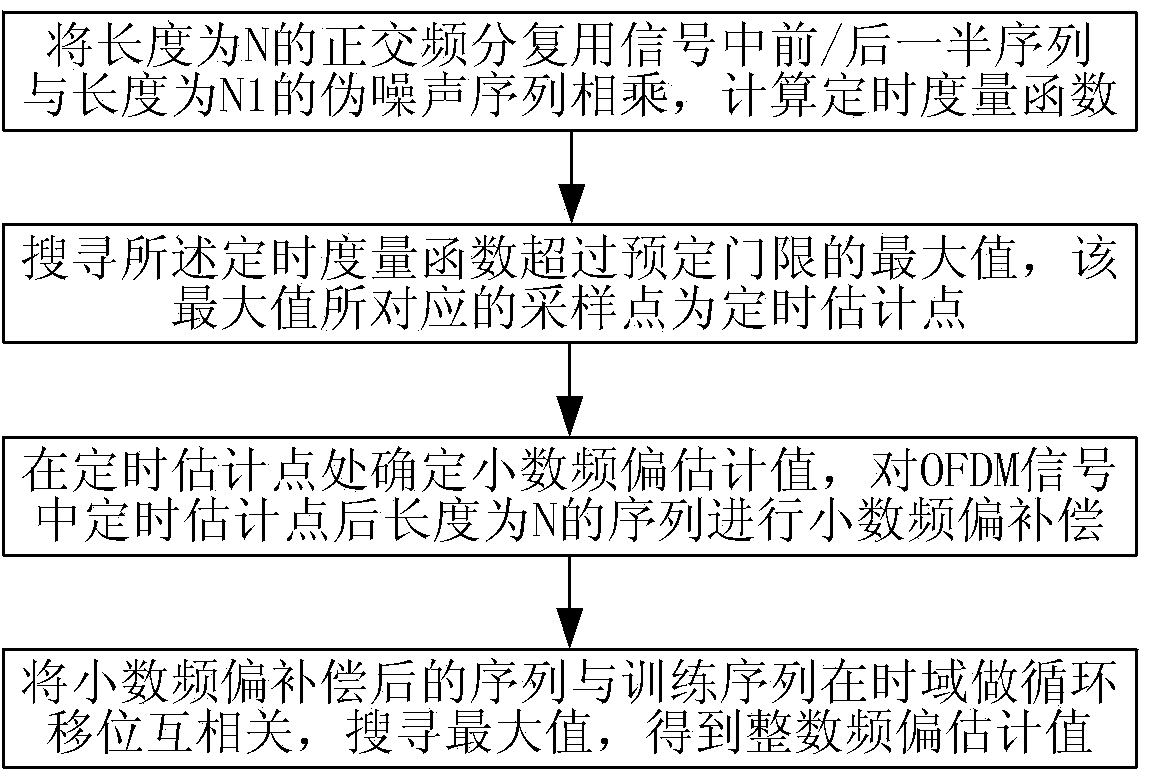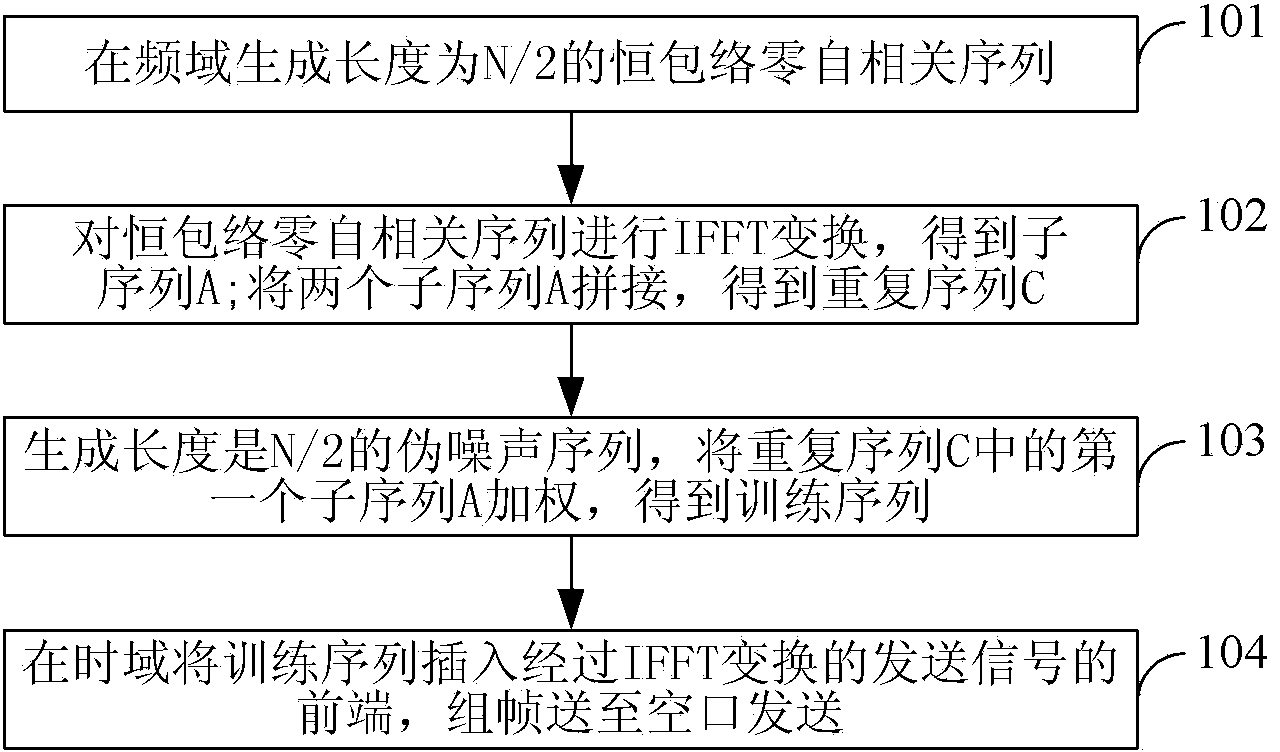Synchronous acquisition method and receiving end equipment of OFDM (orthogonal frequency division multiplexing) signal
A technology of orthogonal frequency division and receiving end, which is applied in the field of synchronous acquisition method of OFDM signal and receiving end equipment, which can solve the problems of sharp peak, increasing algorithm complexity, and influence of integer frequency offset estimation method, etc.
- Summary
- Abstract
- Description
- Claims
- Application Information
AI Technical Summary
Problems solved by technology
Method used
Image
Examples
Embodiment 1
[0065] Embodiment 1. A synchronous acquisition method for OFDM signals, such as figure 1 shown, including the following steps:
[0066] At the receiving end, the length of the first half or the second half of the OFDM signal of length N is N 1 A sequence of length N 1 The PN (pseudo-noise) sequence is multiplied to calculate the timing metric function;
[0067] Among them, N is the number of points of FFT (fast Fourier transform) / IFFT (inverse fast Fourier transform) of the receiving device; N 1 is half of N; the length of the training sequence in the OFDM signal is N, and the training sequence is the root of the power factor multiplied by the concatenation sequence;
[0068] The spliced sequence is obtained by multiplying the previous subsequence in the repeat sequence by the pseudo-noise sequence; the repeat sequence consists of two lengths of N 1 A subsequence of which is generated by the frequency domain and has a length of N 1 The CAZAC (Constant Envelope Zero Auto...
Embodiment 2
[0122] Embodiment 2. A receiver device, comprising:
[0123] The calculation unit is used to convert the length of the first half or the second half of the OFDM signal whose length is N to N 1 A sequence of length N 1 The pseudo-noise sequence is multiplied to calculate the timing metric function; wherein, N is the number of points of the fast Fourier transform / inverse fast Fourier transform of the receiving end device, N 1 is half of N; the length of the training sequence in the OFDM signal is N, and the training sequence is the root of the power factor multiplied by the splicing sequence; the splicing sequence is multiplied by the previous subsequence in the repeating sequence by the pseudo noise sequence; the repeating sequence consists of two lengths of N 1 A subsequence of which is generated by the frequency domain and has a length of N 1 The constant envelope zero autocorrelation CAZAC sequence of the constant envelope is obtained after fast Fourier inverse transform;...
PUM
 Login to View More
Login to View More Abstract
Description
Claims
Application Information
 Login to View More
Login to View More - R&D
- Intellectual Property
- Life Sciences
- Materials
- Tech Scout
- Unparalleled Data Quality
- Higher Quality Content
- 60% Fewer Hallucinations
Browse by: Latest US Patents, China's latest patents, Technical Efficacy Thesaurus, Application Domain, Technology Topic, Popular Technical Reports.
© 2025 PatSnap. All rights reserved.Legal|Privacy policy|Modern Slavery Act Transparency Statement|Sitemap|About US| Contact US: help@patsnap.com



